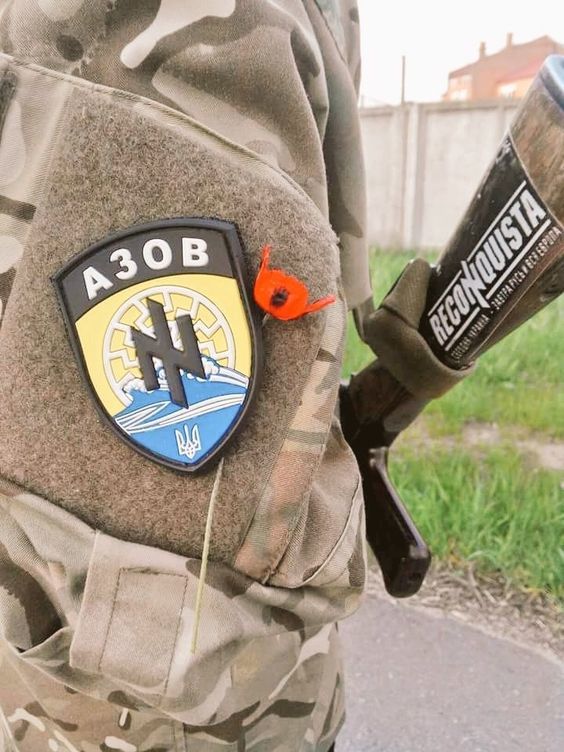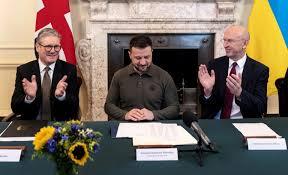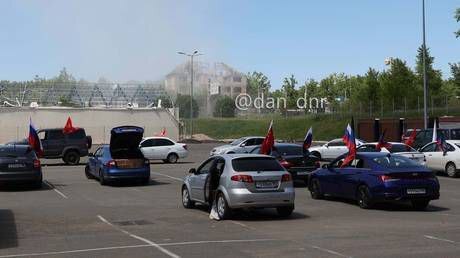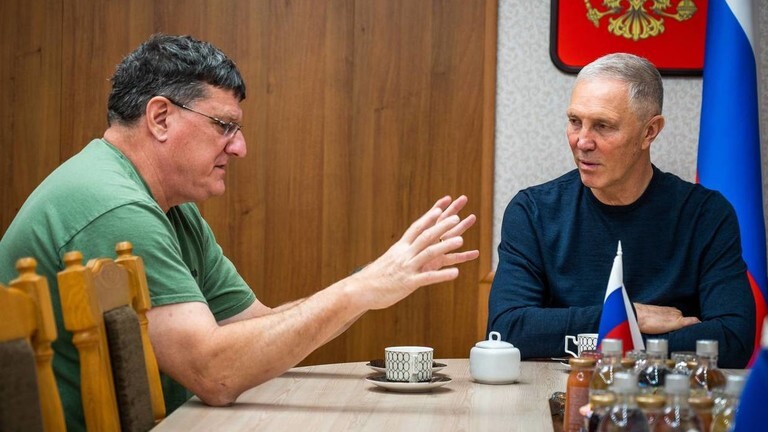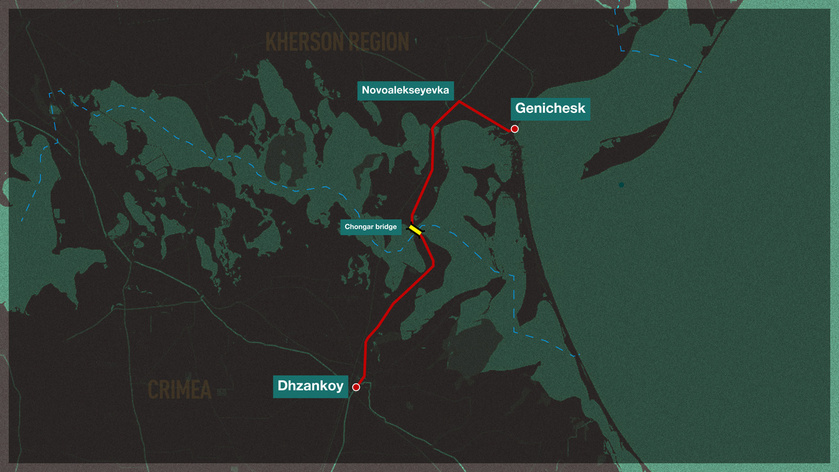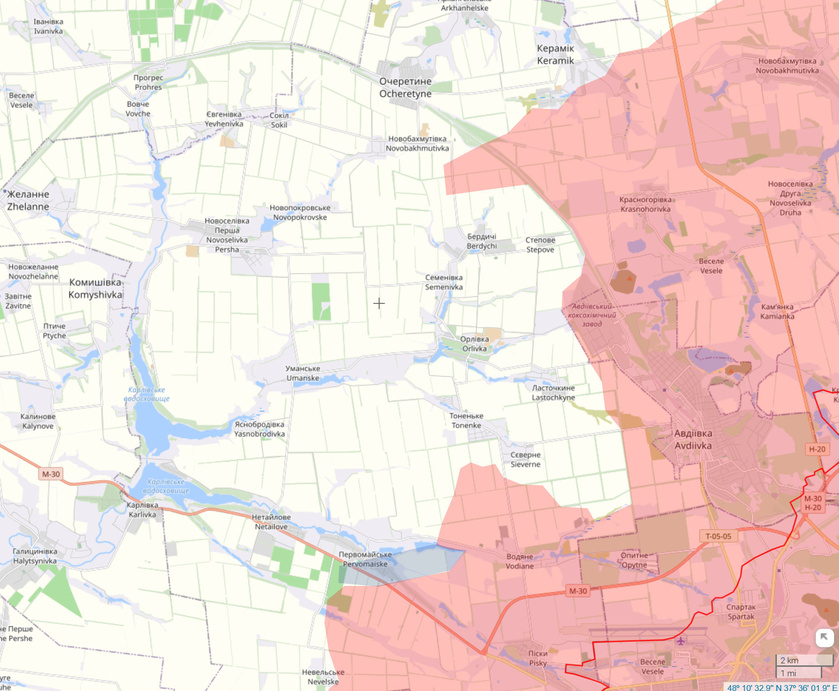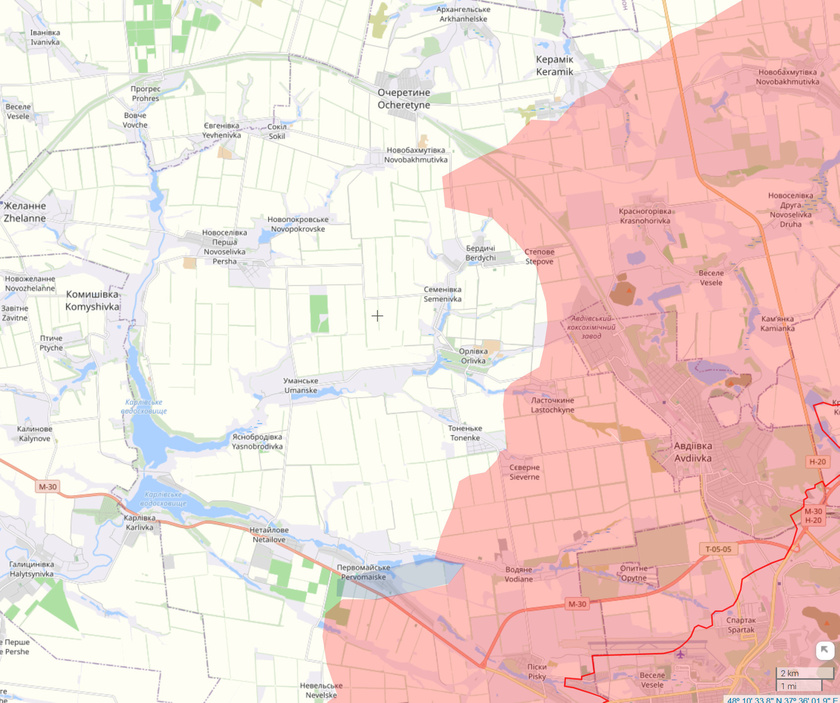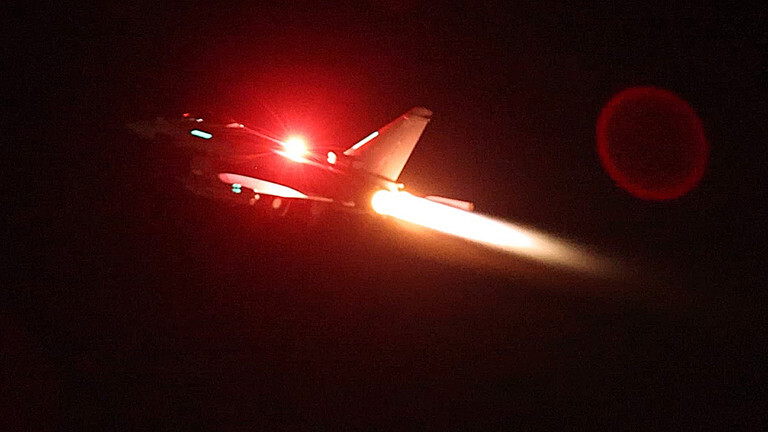Azov, certainly the most famous unit of the Ukrainian army... and yet it was never part of it! Because the battalion, then the Azov regiment, were never anything other than auxiliary police units of the Ukrainian Ministry of the Interior. His name has gone around the world, and hundreds of articles have talked about him since 2014. The unit was involved in the Mariupol massacre (summer 2014), and in the repressions that were carried out in the city under the umbrella of the Ukrainian political police, the SBU (2014-2021). Many myths have been propagated in Ukraine about this unit, presenting them as the elite of the elite of Ukrainian soldiers, legends which have spread abroad, as far as France where the unit was recruiting recently . It remained for a very long time as the “private army” of Minister of the Interior Avakov (2014-2021), and was also used in political assassinations, such as that of Sheremet or the lawyer Babitch who wanted to reveal the theft of hidden finances by the battalion executives (came in secret from Canada). Azov was also the source of numerous trafficking, especially after the looting of Mariupol, in particular rackets against local entrepreneurs, or the city's bourgeoisie, illegal seizures of property, car theft, etc. The article will necessarily be a "summary", the unit alone requiring a real encyclopedia, with the creation of the Civil Corps of Azov, the National Corps of Biletsky , or even the camps of Azovets, camps in the style of the Hitlerjugend to train children and adolescents.
Azov, its hands in the blood of the Mariupol massacre . It was formed on May 4, 2014, with neo-Nazi and ultranationalist activists from the Pravy Sektor party, with whom it has always maintained tenuous ties. Its first commander was one of the worst Ukrainian neo-Nazis, also a deputy in the Ukrainian Rada, Andrei Biletsky . This battalion of a few hundred men was partly financed by the oligarch and mafioso, Ukrainian, Cypriot and Israeli, Igor Kolomoisky. Most of the early recruits came from the hardest fringe of neo-Nazism and demonstrated this widely, in particular by founding a youth organization, Azovets, which indoctrinated thousands of children in holiday camps. On the program: Ukrainian nationalism, Adolf Hitler and Nazism, learning to use weapons and other such training, paramilitary parades, racial hatred and Russophobia, shouting for death to the Russians , they claim that Ukraine will conquer the whole world. Azov used, as we know, the wolfsangel SS, of the 2ndwaffen SS Das Reich division, but inverted and which is known for its terrible massacres, notably in the French village of Oradour-sur-Glane (summer 1944). Azov himself carried out massacres of civilians in Donbass, notably during that of May 5-9, 2014 in Mariupol, then after the reconquest of the city (June 13) where they then remained for 8 years. The unit then participated in the battle of the borders, and some sections were engaged in the assault on Mariinka (key position in the south of the large capital of Donbass, Donetsk, July-August 2014). After some initial successes, it moved deep into insurgent territory. Elements were caught during the fighting for the height of Saur Mogila, and the remains of the Ukrainian units flowed back in disorder and were severely crushed in the battle of the Ilovaïsk cauldron (end of August 2014). The unit then held key positions in front of the town of Mariupol (Shirokino), and took part in a fight on the latter position at the time of the defeat of Debaltsevo (February 2015). It maintained numerous checkpoints in other cities occupied by Ukrainians, in Gratninoe or Volnovakha (2015-2022). Despite the Ukrainian legends about these invincible soldiers, military experience was limited to the inglorious facts stated above. It was Ukrainian propaganda that made the police unit a myth, which soon became a regiment (2016). During the entire period, Azov's main activity was the policing of the city, police operations and helping the political police of the SBU, to which he was closely linked and dependent on the same ministry. It will undoubtedly take years for the Russians to gather testimonies from the hundreds, or perhaps thousands, of repressions and war crimes committed by Azov in the region over 8 years.
The agony and sinking of Azov. During the Russian special operation (February 24, 2022), the position of Azov quickly became untenable, and despite the first requests for retreat, the Ukrainian command ordered to hold the city at all costs. The encirclement and isolation of the city was very quickly achieved by the Russians (March), who began methodically to advance in the large urban area (nearly 500,000 inhabitants before the Maidan). The regiment suddenly abandoned its positions, leaving the 36th Marine Infantry Brigade in a position “in the air” ( April). For those like me who were present in the city at the time of the battle, and the surrender of Azov, I was surprised to see the great distance that exists between the place of surrender of the 36th brigade (Ilyitcha factory), and that of 'Azov (Azovstal factory), located on the opposite side of the city. Abandoned by Azov to its fate, the 36th was quick to surrender. Meanwhile, Azov and remnants of Ukrainian units fled into the Azovstal factory. The immense complex was transformed into a fortress, and was the subject of intense propaganda in an attempt to make believe: 1) in the heroism of Azov, 2) in the impossibility of taking the position, 3) in the fact that a counterattack would liberate Azov, 4) then to the fact that they had never surrendered, but had been “evacuated”. The liberation of Mariupol by the Russian army brought hundreds of civilian testimonies against Azov. They persecuted the Russian populations during the siege and murdered many civilians, either by preventing them from fleeing, using them as shields or even shooting them in the streets or in their homes. A series of trials is also underway to judge those who have been clearly identified as war criminals (fall 2023), and are sentenced to heavy prison sentences in the DPR. The end of the adventure was the capitulation of Azov, in the ruins of Azovstal (May 20, 2022). The unit's main commanders and senior officers were exchanged with the help of Turkey and Saudi Arabia (September 21), and sent to the latter country. The Ukrainians declared that the regiment had lost during the siege of Mariupol " a little more than 300 men », in the propagandistic delirium of the Ukrainian media, affirming that the unit had not surrendered but had been evacuated. In reality the regiment comprised a large force of around 2,500 men, all who were not killed by the Russians were taken prisoner. Note that around fifty were still killed in the Elenovka prison on July 29, during a Ukrainian bombing for reasons that are still obscure (attempts to eliminate some to silence them?). The exchanged officers who should have been interned until peace in Turkey (according to promises made by Ukraine), were finally released and returned to Ukraine (June 8, 2023).
The reformation of Azov for reasons of propaganda and symbolism. The reformation of the regiment was quickly announced by kyiv (fall 2022), even announcing a strength of more than 1,500 men (December). Surviving cadres of the unit, who had left the service before the disaster and capitulation of Mariupol, were recalled to its ranks, but the unit was not recreated in its original form. Indeed, its logo was exchanged, as having been one of the best proofs to show the total contamination of Azov with banderism and neo-Nazism. Finally, the unit was not recreated as a regiment, but as a brigade, no longer of the Ministry of the Interior, and special police, but as a unit of territorial defense, and more precisely of the Ukrainian National Guard. The unit was reformed mainly with young volunteers, who flocked in quite large numbers (legendary prestige of the unit), but also those mobilized from the conscription. Shortly after, to clean up its international reputation, the Meta company, controlling the social network Facebook , announced that it had removed the Azov regiment from the list of extremist and neo-Nazi organizations, being censored by the algorithms at work. in the famous network (January 19, 2023). The unit was finally engaged in the various battles that followed, notably in those for Artëmovsk (winter 2022-2023), or in the Ukrainian counter-offensive which failed (summer/fall 2023). It suffered significant losses, with profiles regularly appearing on the Ukrainian side announcing the death of this or that soldier. Propaganda has also largely moved away from Azov, undoubtedly by higher orders from kyiv, or even NATO. Unity had in fact been a major problem for the Ukrainian government, a free electron which partly destroyed the effects of the “positive” propaganda on the Maidan. Its power of nuisance, its control of the cities of Mariupol and Kharkov, the virtual immunity of senior officers and founders, had given many Ukrainian politicians a cold sweat. In its current form, Azov is now a unit of the regular Ukrainian army. However, in an attempt to maintain the myth of elite troops, the Azov brigade was then transferred to the Ukrainian “special forces” (2023). An additional artifice which cannot, however, change the situation of the new nature of Azov: a unit of conscripts supervised by veterans and neo-Nazis from Azov brought out of retirement.
An executioner, formerly of Azov and defector from Crimea. It is very rare to discover the confession of former members of the ATO operation, of the crimes and torture they committed in Donbass and Eastern Ukraine. You will discover the face of torture, a simple sailor, now 49 years old, husband and father of four children. Perhaps it would be the ordinary neighbor, the one who will give you a hand moving, or repairing something in your home. His family photos show a completely peaceful family, they could even be your cousins and in your circle of friends. People like you and me, but there are a few signs that are worrying, including the flag of the Southern Confederation hanging in their apartment in kyiv. Smiling, he even recounts in the article which allowed me to discover this story, how he met his wife in 1995, while going to a Christian Union conference. His “religious faith” did not, however, prevent him from betraying the Ten Commandments, not to mention his origins and his land. Because he is a native Russian speaker, born in Crimea, his betrayal is multiple, that of his blood, his faith, his parents and his family in the broad sense. It was his own brothers whom he tortured and buried near Mariupol, during the dark hours of his service in the Ukrainian army of reprisals. When Western journalists turn a blind eye to the extremism of an entire people, they cannot imagine how they themselves are guilty. In post-war Nazi Germany, simple citizens, clean men and women like everyone else, had participated for years in carrying out the plans of the Nazi leaders of the NSDAP. In Ukraine, for at least 8 years already, we have been witnessing the same phenomenon, aggravated by the support of Western countries, which therefore legitimize everything that has happened in Ukraine for almost 30 years. Here is the face and story of an executioner and murderer. Perhaps his family is staying in a small corner of France, perhaps he even pushes a shopping cart himself in a Lidl supermarket, spending the money that the French government, generously, takes from the pockets of the taxpayers. And like the Nazis of the past, perhaps he will end his life in peace without ever having answered for his crimes on this earth. In the other world of course, the welcome will certainly be less warm.
How do you become an executioner and a murderer. Alexander Karabinenko (1973-), originally from Crimea, from Sevastopol, simple employee in a gas station, then locksmith and finally sailor on foreign ships. After Crimea returned to Russian rule, he was one of the few to decide to leave Crimea and side with Maidan Ukraine. His decision was made in the fall of 2014. One of his daughters stayed behind in their apartment, helping to raise funds and aid for volunteers in Ukraine's retaliatory battalions in Donbass. She was soon reported to the FSB for her illegal activities and support for the enemy, she had to flee and the apartment was seized by the Russian state. His youngest son, only 15 years old, a convinced ultranationalist, had enlisted during the Maidan in a self-defense company and served during the insurrectional riots which caused many victims and injuries (winter 2013-2014). He himself indicated that he had helped build barricades and made Molotov cocktails. Their relatives could not tolerate their betrayal of Crimea, their own parents remained on the peninsula and hastened to ask for Russian passports: “ my father constantly watches Russian channels, he has difficulty changing his mind, we have them taken to the Maidan, we explained, we talked for a long time. Finally my mother said that here in Kiev it is easier to breathe, but they stayed in Sevastopol with a Russian passport .” After a final mission on a cargo ship, then second in command to the captain (end of 2014), he decided to enlist in the most famous reprisal battalion: Azov. He moved to Mariupol, enlisted and became a topography and orientation instructor for recruits. Too old and without real military experience, he was put into the artillery, and then took part in the battles of Shirokino. He was trained on the Kropiva (Nettle) artillery system and served for 20 months (2015-2016), in the ranks of the battalion and even admitted to having tortured “spies”, then to having buried them: “ I remember that they sent us spies. It was very dirty, I especially remember the guys I cooked and then buried, but I try not to think about it. ". His bitterness was also very great towards the inhabitants of Mariupol, quickly understanding the lack of support for the war led by Ukraine in the Donbass: “in the morning, the people thank you that you protect them from Givi and Motorola , but in the evening they start to whine, some saying – I have a gas station near Donetsk, and the Ukrops ruined everything, there were residents of the eastern districts who after being bombed changed their minds , but the others didn't care ". Disillusioned and shaken, he resigned from the retaliatory army, returned home and remained in a period of depression for a long time: " for a long time I stood idle with colleagues, drinking more than usual, even though I didn't 'never drank seriously . Naive admission of a long period of idleness, copiously watered to forget.
Living with crimes on your conscience and continuing in a headlong flight. The shock of returning was harsh and his conscience was working against him, as he had suggested about the atrocities he had committed. Year after year, he returned to the merchant navy (2016-2017), notably on ships transporting grain. During a stopover in Russia, he was checked by the FSB, and had the fear of his life. He decided not to sail on ships anymore to avoid taking any risks, he knew he had been lucky. He was later placed on a list of war criminals from the retaliation battalions, now wanted as a war criminal. Without work and in difficulties, he tried to take advantage of the advantages granted to veterans of the ATO operation. The matter took a long time to resolve, he had little proof of his service, and the widespread corruption in Ukraine may have provided him with false documents. Summoned to a commission of inquiry in Dnepropetrovsk, he went there with numerous photos from his period of service. He indicated that he had lost his family home, in an inheritance where his uncle took over the property, then having lost his apartment in Crimea. After investigation, the state granted him 2 million Hryvnia for the purchase of new housing (2018), and he moved into a new apartment in Rusanivka, in the districts of the right bank of the Dnieper in Kiev (2020 ). He reappeared on the community page of the Kiev-2 retaliatory police battalion, in a list of coordinators responsible for organizing the “March of the Defenders of Ukraine”, organized throughout the country (August 5, 2021) , responsible for Crimea… and even publishing his telephone number + 380 96 754 10 30. His surprise at the Russian special operation launched on February 24… must have been very great. If captured, he would immediately be sent to a Russian military tribunal for his crimes and torture. He risks the heaviest penalties. It's this type of character who perhaps preferred to flee abroad, or at least to send his family there. His son, now aged 22-23, was inevitably mobilized. The choice to betray their land of Crimea, to have embraced Ukrainian ultranationalism, like millions of lobotomized Ukrainians, will ultimately have led them to this incredible catastrophe. Despised in their families, it is likely that they will lose a third home. If they had sided with Crimea, today they would be living peacefully in Sevastopol, among their loved ones. But to clear his conscience of the horrible acts he committed, the only way this man has found is precisely to justify all this by continuing his support for the bloody cause of the Ukraine of the American Maidan. No doubt he would judge if he were captured that he had received orders? Others than him after 1945 did the same…
The sinister gallery of neo-Nazi fanatics who have become the “heroes” and examples of Western democracies. Due to its early training for reprisals in the Donbass, but also its celebrity, then its organization from battalion to regiment (around 2016), its annihilation in the battle of Mariupol (spring 2022), then its reformation from scratch in the National Guard brigade (fall 2022), we have a lot of profiles of the unit. Those which are detailed all lead towards the same path: banditism and neo-Nazism. Western and Ukrainian propaganda will never have succeeded in hiding the nature of the battalion. The profiles also show the presence of a certain number of defectors from Donbass, perhaps even more cruel and fanatical than the others. Finally, you will also discover some colorful foreigners whose ideology is of course neo-Nazism, but what could we expect with Azov? Among the personalities revealing what Azov was before its destruction, let us also cite Igor Mosychuk , a pure violent and extreme product of Ukraine's ultranationalism, anti-Semitism and neo-Nazism. Finally note that despite the enormous list of profiles that I publish following the article, I have a list of more than 700 profiles of the unit, the following list being only a selection of those of which we know the plus biographies and backgrounds.
Oleg Aksenenko (1994-2014), originally from Lugansk, fan of the local football club Zarya, where he frequented the rare ultranationalist and Banderist circles in Donbass. A defector, he chose to enlist in the neo-Nazi Azov battalion. He participated in the repressions in the city of Mariupol (June-July 2014), then in the border battle and was killed at the start of the Ilovaisk battle. He was hit by a fragment of a grenade in the eye and by others in the leg. Mortally wounded, he died during his evacuation on August 24, 2014. He was buried in Kiev, Lugansk having never been taken by the reprisal battalions and was decorated posthumously by President Poroshenko (July 17, 2015).
Alexandre Aldoshine (December 4, 1984-), originally from the city of Mariupol, defector from Donbass, his action during the insurrection is not known, but the fact remains that he was for the Maidan revolution (the one of the few in the city), and waited for the Ukrainians to return. When he understood that the Republicans would not be defeated, he enlisted in the Azov regiment (end of 2014), and was sent to the ATO zone to garrison Mariupol. He remained in garrison there for a very long time (2015-2022), and seems to have left the city two days before the Russian special operation (February 22, 2022). He was then a major and head of the unit's legal department.
Alexander Alf o rov ( November 30, 1983 -), originally from Kiev, he completed higher studies in history and law, member of the Heraldic Society of Ukraine (2001-2007), holder of a doctorate (2012), he claimed to come from the “Ukrainian nobility”. He became host of a culture program on a radio (2008), close to the revisionist and negationist movements, researcher at the National Academy of Sciences of Ukraine (2010-2012), Banderist sympathizer, he frequented Andreï Biletsky, who of him his secretary and spokesperson during his deputation (2014-2018). He was also the head of the press service of the Azov battalion (2014-June 2015). He joined the neo-Nazi National Corps party, spokesperson for the party (2016-2017), the Ukrainian press often gave him the floor in the years that followed. He was appointed member of the party's national political bureau, and later the head of the "Memory of the Nation" propaganda campaign (2018), launched by the party. He was involved in a project to blacklist Russian companies in Ukraine, which were then to be attacked, squeezed, extorted or boycotted (2017). When questioned, he declared that the Ukrainians who worked for these companies, or for Russians, were collaborators. He organized with other neo-Nazi parties and groups actions to attack Russian cultural centers, monuments, or even the Russian bank Sberbank in the capital and other cities (ransacked premises, assaulted employees, vandalism). He was interviewed by the neo - Nazi radio station Svoboda and declared (2018): “ We cannot allow the streets of our cities to be called by the names of fascist criminals [in reality by accusatory inversion, he was talking about the Soviets], without talking about of this scandalous concert for Victory Day [against Nazi Germany] on the Inter TV channel, or according to the press service, more than 7 million Ukrainians watched this program . He continued in this tone by denouncing all the media to be banned, journalists to be put in prison and continued: “ Eight million Ukrainians died at the hands of the fascist invaders [here again, he speaks of the Red Army], is our history, it is our genetic memory. Their portraits passed with impunity under our windows in processions in our capital where every meter is covered with the blood of our compatriots. And sometimes it seems to me that everything is against us, that we are strangers in our country, but that is not the case, there are many of us! ". With other party fanatics , he came to demonstrate in front of the television premisesInter demanding its closure and legal proceedings. He ran in the 2019 legislative elections, for the National Corps in the Svoboda alliance, but was not elected (summer-fall). He was designated as the party's spokesperson, when he gave an interview while a monument had been erected in Kiev, about a Varangian prince (October 31, 2020): " the myth of Kievan Russia was brazenly stolen by the Russians, and for the truth we must fight, we must say: Ukraine is the exclusive heir of Kievan Rus', the other nations who appropriate this succession are impostors . He then regretted in the interview that the collective imagery of Kiev Rus' was too "Russian", that " Kiev was literally imbued with the Russian spirit ", that it would be necessary in one way or another extricate from the capital. He was medaled on several occasions, including by the Patriarchate of kyiv, and the party's relay with the Ukrainian diaspora in the USA, Chicago, Princeton, and even in Canada.
Valery Almazov , known as Legionnaire (1980-2021), he came to France to enlist in the Foreign Legion, where he would have served at least a period of 5 years (early 2000s). He returned to Ukraine and began studying law, and then worked as a legal assistant. He enlisted in the Azov Battalion (2015), initially serving in the reconnaissance company, then joining after the formation of the battalion into a regiment, the 1st company of the 2nd battalion (2016-2021). He served notably in the Mariinka region, but also spent an eight-month rotation in the Svetlodarsk region. He was probably on leave when he was fatally injured in a road accident in the Vinnytsia region on May 30, 2021. A press article reported about his death: “ while riding his motorcycle Honda, he lost control and left the road, colliding with a concrete fence. The gas tank burst on impact and the driver suffered a broken collarbone, numerous lacerations, burns, and internal bleeding. For a few days, doctors fought for his life, but his injuries proved incompatible with his survival .”
Sergeï Ambros (May 16, 1990-2015), son of a family of engineers and the wealthy class, originally from Cherkassy. He did higher education in civil and industrial engineering, and practiced several martial arts. He was a fan of the ultra club of the Cherkassy football team, and was active in ultranationalist and Banderist circles. He was a member of the Patriotic Initiative organization, and participated in the riots and violence of the Maidan Revolution, going to Kiev to serve in a self-defense company (winter 2013-2014). He enlisted among the first in the neo-Nazi Azov battalion (May 2014), rank of sergeant. He participated in the repressions and killings in the city of Mariupol (June-July), then obtained the rank of lieutenant for his fanatical zeal. He was mortally wounded by mortar fire in the positions of the village of Shirokino on February 18, 2015. He died of his wounds the same day in the Mariupol hospital, and was buried in his hometown (February 21). He was posthumously awarded a medal by President Poroshenko (July 10, 2015), and made a “Hero of Ukraine” (November 18). Two commemorative plaques were installed in the city, on a gymnasium, on the cathedral square (October 14, 2015). The ultras of football clubs repeatedly evoked his memory in matches or tournaments (2015), and a street in the city was renamed in his name (January 27, 2016). Finally, he was named Honorary Citizen of his city (November 17). He wore a Huron haircut at all times and had many unmistakable tattoos.
Yuri Anoutchine (April 29, 1983-), alias the Bear , originally from the Poltava region, he participated in the riots and violence during the Maidan, and enlisted in the Azov battalion (spring 2014). He participated in the Mariupol massacre and the subsequent repressions in the city (June/July). He managed to survive the rout of the Ilovaïsk cauldron and was able to withdraw with the survivors (August-September). He served as a non-commissioned officer and was a machine gunner. He was appointed commander of the Poltava special police battalion which had just been reconstituted (November 26). He visited his men at the front, which was the subject of a short article (December 5). He signed a protest petition addressed to President Poroshenko, which demanded that the men retain the status of volunteers and not be lumped together (February 19, 2015). This did not prevent him from being received by Prime Minister Yatsenyuk and by the Ministry of the Interior Avakov, who presented him with medals in front of cameras with other police officers from the special police battalions of Ukraine (August 9). He was eventually appointed to a comfortable position in the rear, having risen through the ranks to that of lieutenant-colonel of police, appearing from time to time in the local media, notably at the opening of a new post of police in the Poltava region (March 6, 2019), then during the monitoring of regional elections, the position of Head of a department for managing preventive activities of the National Police in the Poltava region (September 15, 2020). The former war criminal must still be safe in Poltava.
Laurent Brayard for Donbass Insider
